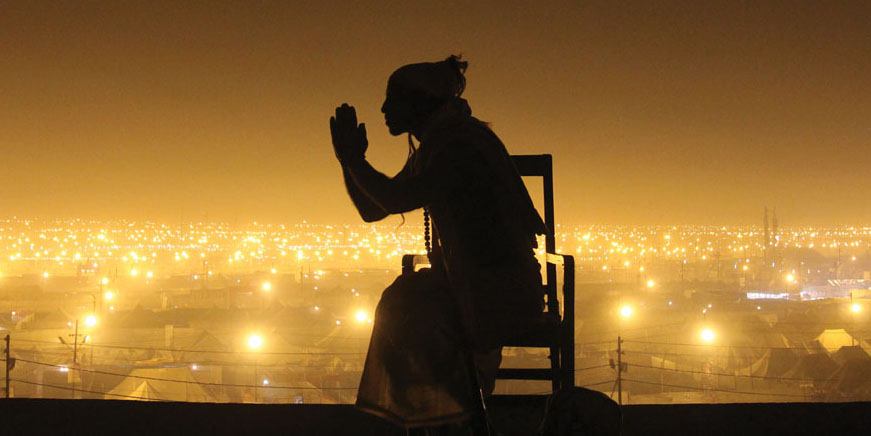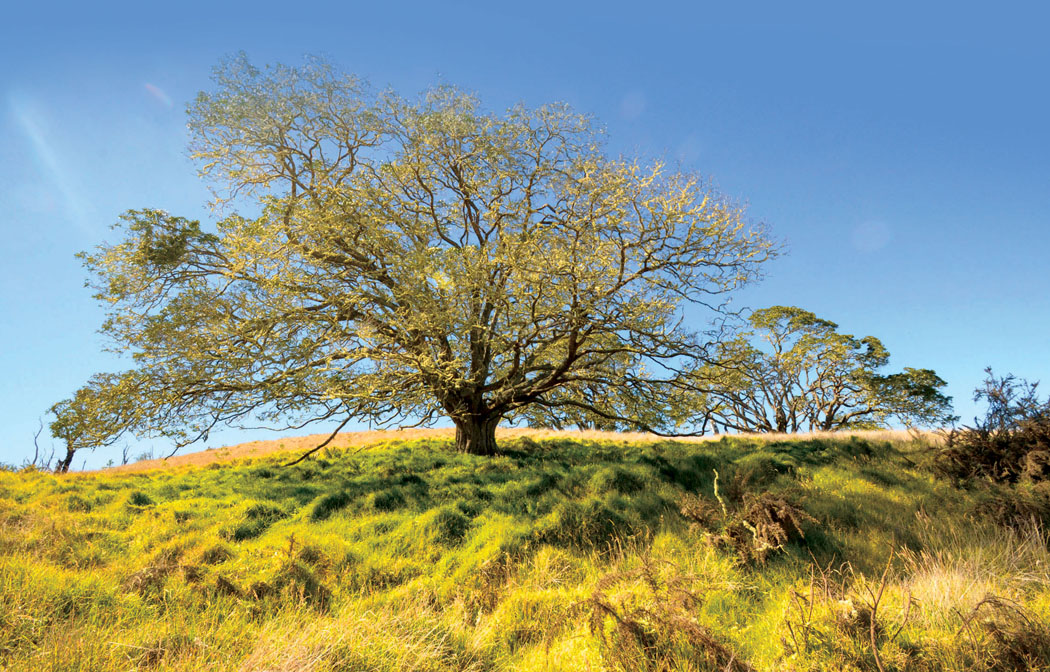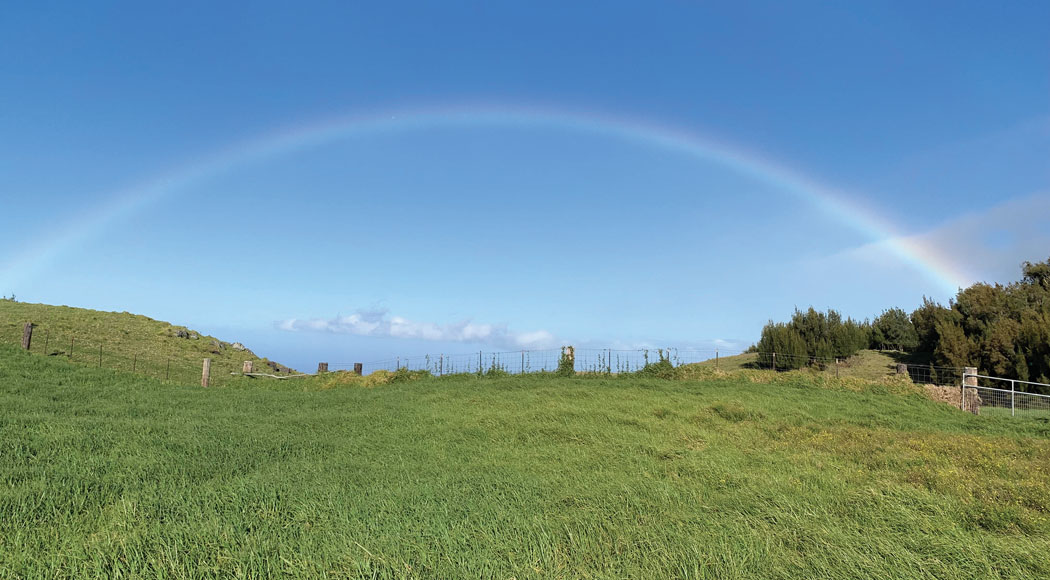
Kawaihae I: Bringing an Ahupua‘a Back to Life

By Jan Wizinowich
During Kamehameha’s time, the ahupua‘a (land parcel) of Kawaihae fed thousands of people with its rich ocean resources and highly developed field system, irrigated from the abundant Kohala watershed. Now there are only remnants of that time within the arid, goat-infested slopes, and runoff that is compromising the shoreline waters and fisheries.
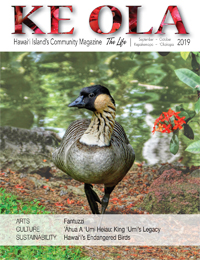
The spirit of the land is rising up to speak through the efforts of the Kailapa Community Association (KCA) and their many partners. The Kailapa subdivision, given its name by Kawaihae kupuna Aunty Lani Akau, began development in the 1980s. Located just north of Kawaihae within the Kawaihae I ahupua‘a, Kailapa is now a community of 146 homes.
Incorporated in 2004, the KCA acquired nonprofit status in 2010, when the association began moving towards creating the foundations for the development of a sustainable, resilient community based on Native Hawaiian values.
One of their first steps was to gather to plan the construction of a multi-use pavilion that would be the piko (center) of the community. “The pavilion was built by volunteers from the community. It just worked. It really brought the community together and now we have a place to gather,” said KCA Executive Director Diane Kaneali‘i.
What came out of the pavilion planning process was the vision to work together to achieve self-sufficiency through traditional Hawaiian values. Now, essentially complete, the pavilion provides a place to share knowledge, traditions, and practices.
A Net Thrown Wide
With the potential of 10,000 acres and limited water sources, creating a functioning ahupua‘a is a tall order, but along with Kailapa community resources—landscapers, heavy equipment operators, cultural practitioners, ranchers, la‘au lapa‘au (medical practioners), and entertainers to name a few—KCA is receiving help from its connections to the broader community.
In January 2018, the KCA was selected as one of two Hawai‘i communities to participate in the Resilient Hawaiian Community Initiative (RHCI), a one-year program funded through the Department of the Interior, which seeks to combine a biocultural framework for resilience by using local/traditional ecological knowledge and cutting-edge science.
Beginning in April 2018, the community met with Pacific Solutions and their team of specialists to ponder the question: what is important to you, and what are your fundamental values in this? A massive amount of information was gathered and with the guiding vision of “‘Ehuehu I ka Pono” (Thrive in Balance), the KCA developed a resilience plan that balances wai, ‘āina, and kānaka. Three core values emerged as a guiding framework: mālama ‘āina, or resource management; noho kū‘olo‘a, or self-sufficiency; and laulima, or community cohesiveness.
First, Know Your Place
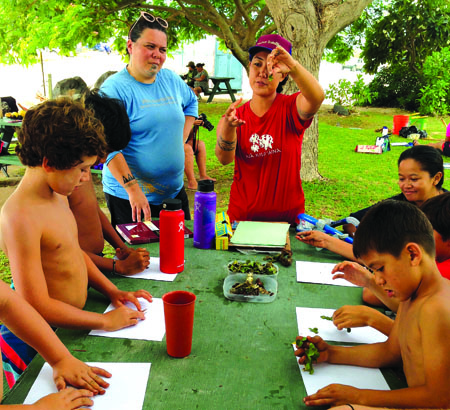
In order to mālama ‘āina, one has to understand the land and what it needs, so for KCA, the first step is to get access to the entire ahupua‘a. The Department of Hawaiian Homelands, which owns the entire ahupua‘a, has leased out some upper sections to which KCA is in the process of gaining access.
“Once we get right of entry and we can get on to the land, we can begin to understand the issues and how we mitigate those issues, how we care for the place before we start to put our needs onto it,” explained Diane.
Most crucial to feeding the land is access to water, which has, in recent history, been diverted for use by the ranches. Traditional irrigation brought water down from 5000 feet in a controlled ‘auwai network, which in turn created a thriving field system. The Kehena ditch with its 16-inch pipe laid in 1968 is a potential major source of water.
“We took a trip up there [Kohala watershed] with Tim Richards and water resource managers and yes, the pipe is there and still intact to bring water down. Now the Commission of Water Resource Management, an agency in charge of all potable water in the state, needs to put in gauges so we know how much water is coming out of there. There’s plenty of water for everyone but we need to get our share of it,” said Diane.
In the hoped-for scenario for Kawaihae I, water and power are inextricably linked. As the water flows down the mountain there is potential to generate power, as the water will be captured in a series of reservoirs afloat with solar panels.
Discovering the Past in the Landscape
KCA has also been able to get some outside help to understand the natural systems that were once at play and allow them to thrive again. “Dr. Michael Graves has been coming from New Mexico to study these fields. He’s taken soil samples and was able to document how the water came down because the old ‘auwai system is still intact,” said Diane.
Using traditional historic resources, information provided by Dr. Graves and topographic imaging provided through the use of Geographic Information System mapping, a clearer picture of the ahupua‘a is developing. Also based on traditional knowledge the ahupua‘a is divided up into zones that reflect their historical use.
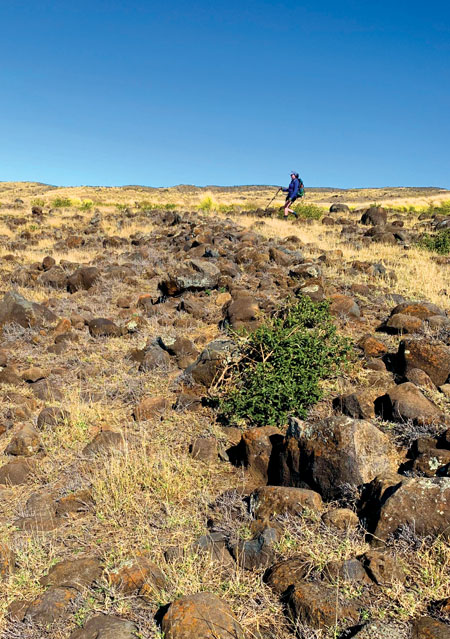
These zones have been given the term “campuses,” as they will provide real-world learning labs for KCA community members and their partner organizations, as well as future student groups. “Each campus will offer people, schools, and the general public opportunities to come learn and take in what the land has to give to them,” explained previous project manager Jordon Hollister.
Beginning at the top, “The mauka portion is the wao akua, where the aquafers are recharged and contains the rainforest, so that would be a campus to learn about those things,” said Jordon. “Wao nahele, where Kahuā Ranch is leasing, is another campus for people to learn about starting a new forest.”
The next campus is wao kanaka, which holds the potential for lessons in sustainable ranching and agriculture. Below wao kanaka is wao ‘ilima, an area that once held an extensive field system.
“There’s a lot of agricultural fields that exist there that are very well preserved. It’s a place to learn about traditional Hawaiian agriculture and reinstitute the agricultural field system with adaptive reuse, and reopen those fields,” said Diane.
Below that is the ‘oihana campus, which is traditionally designated for a profession or job, and already contains a solar-powered aquaculture operation. “This site would focus more on 21st century agricultures, aquacultures, solar farms. Whatever we can do to make ourselves more self-sufficient,” explained Jordon.
The Kahakai campus, which is 72 shoreline acres across the highway from Kailapa will be a place to learn about managing shoreline resources. “Keali‘i Maielua is our manager for this oceanfront project. Keali‘i and his wife Pualani, who is on our board, are part of Na Kalai Wa‘a, so that’s the part that called to them. They’re walking it to see what the land tells them, what the land needs,” said Jordon. “There’s potential for a kai campus as well. There are fishing grounds out there, and we’d like to keep alive the practices to mālama the fishing grounds,” he added.
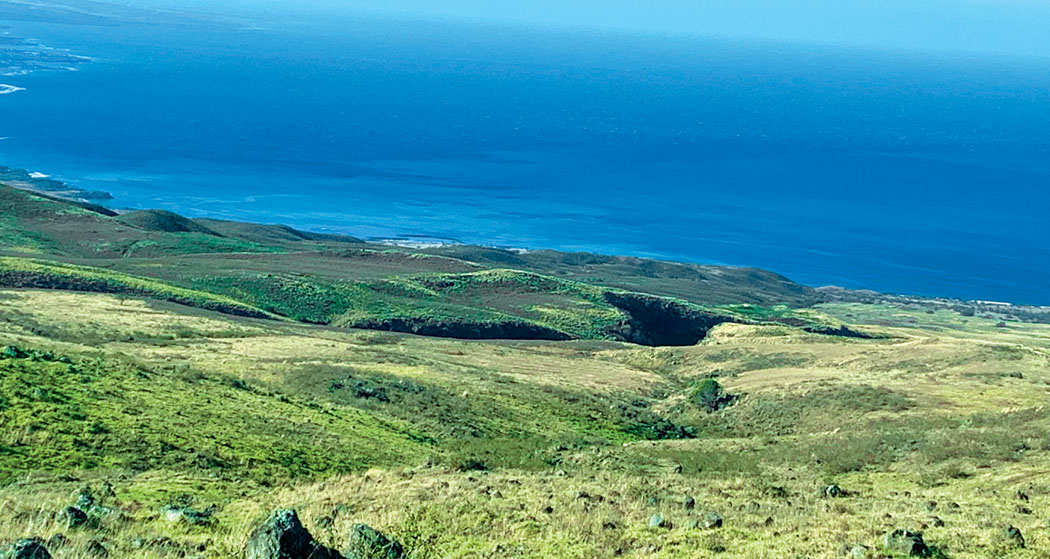
To Observe and Move Forward
Along with revitalized field systems and revegetated slopes to prevent erosion and runoff, fishing grounds, an essential food source, need to be managed. To gain an understanding of the management of this resource, the KCA, along with partners Kai Kuleana and South Kohala Coastal Partnership, took a trip to Moloka‘i to meet with Uncle Mac Poepoe to learn about managing community fisheries.
Service learning was interspersed with explorations of the north shore of Moloka‘i and the proposed Community-Based Subsistence Fishing Area. Upon their return, the groups gathered to record what they had gleaned and to create a picture of what an ocean fisheries management plan for Kawaihae might look like.
For the last seven years KCA, looking towards future generations, has sponsored the Nā Kilo ‘Āina ocean camp, led by Pelika Andrade. Kilo are traditional watchers and observers of the land and ocean, to guide resource management. For one week in October, students gather to observe and study their environment. Participants come away with a sense of the connectivity between the natural processes that are crucial to a healthy ahupua‘a.
“They study the ‘opihi and observe moon and spawning cycles, examine gonads and make comparisons in take and no-take areas, matching science with kupuna knowledge,” explained Diane.
A New Ahupua‘a In the Making
The KCA has set a solid foundation of goals, values, and intentions that will help the island community see the potential for a sustainable future, and perhaps lead the way for other ahupua‘a. With the guidance of traditional Hawaiian values in combination with adaptive reuse using the available technology, Kawaihae I has the potential to provide renewable resources that reach beyond its boundaries.
“We are fortunate to have the opportunity to take on this role to create a thriving sustainable ahupua‘a. Thousands of people were fed off these lands and I believe that we can do that again. These are huge opportunities that we are trying to create and bring to fruition but it’s not something that’s going to be done overnight,” concluded Diane. ❖
For more information: kailapa.org

